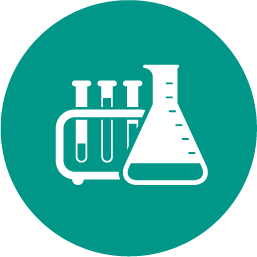
Chemistry, 02.11.2020 18:10 alexanderavrett
Please help, I don't have these sorts of materials and can't just go get them.
Step 1: Prepare for the project.
a) Read the entire Student Guide before you begin this project.
b) If anything is unclear, be sure to ask your teacher for assistance before you begin.
c) Gather the materials you will need to complete this project.
Step 2: Review the chemical reaction.
a) The chemical reaction that you will model is shown below. Calcium oxide (CaO) is a white
solid with a crystalline structure. It is made by heating limestone, coral, sea shells, or chalk,
which are composed mainly of calcium carbonate (CaCO3). During the heating process,
carbon dioxide (CO2) is released and calcium oxide (CaO) is produced. Commercially,
calcium oxide is called lime. One of the oldest uses of lime is to make mortar, a substance
used in construction to secure bricks, stones, and blocks together.
CaCO3 CaO + CO2
Step 3: Build a model of the reactant.
a) Use gumdrops and toothpicks to build a model of CaCO3.
b) Select one color of gumdrop for calcium, a second color for carbon, and a third color for
oxygen. Be sure to include a key of your chosen color scheme with your model.
c) Use the periodic table to help you determine the number of bonds each atom will form.
Step 4: Build models of the products.
a) Use gumdrops and toothpicks to build a model of CaO and a model of CO2.
b) Be sure to use the same colors of gumdrops for calcium, carbon, and oxygen as you did in
Step 3. Include a key of your chosen color scheme with your models.
c) Use the periodic table to help you determine the number of bonds each atom will form.
Step 5: Type one to two paragraphs that describe your models and explain the conservation of
mass in the chemical reaction.
a) Create a new blank document. Type your name at the top.
b) Type one to two paragraphs that describe your models and relate them to the law of
conservation of mass. Your document should:
i. identify the names of the reactants and products in the reaction.
ii. identify the number of molecules that make up the reactants and products.
iii. identify the type and number of atoms in each molecule of the reactants and products.
iv. explain what happens during the chemical reaction.
v. explain how mass is conserved during the chemical reaction.
Step 6: Evaluate your project using this checklist.
If you can check each criterion below, you are ready to submit your project.
Did you create an accurate model of calcium carbonate (CaCO3)? Your model should include
the correct number of gumdrops for each element in calcium carbonate, consistent use of
colors for elements in calcium carbonate, and the correct number and placement of toothpicks
(bonds).
Did you create an accurate model of calcium oxide (CaO)? Your model should include the
correct number of gumdrops for each element in calcium oxide, consistent use of colors for
elements in calcium oxide, and the correct number and placement of toothpicks (bonds).
Did you create an accurate model of carbon dioxide (CO2)? Your model should include the
correct number of gumdrops for each element in carbon dioxide, consistent use of colors for
elements in carbon dioxide, and the correct number and placement of toothpicks (bonds).
Did you type one to two paragraphs that describe your models and relate them to the law of
conservation of mass? Your document should include the names of the reactants and
products in the reaction, the number of molecules that make up the reactants and products,
and the type and number of atoms in each molecule of the reactants and products. It should
also explain what happens during the chemical reaction and how mass is conserved during
the reaction
Step 7: Revise and submit your project.
a) If you were unable to check off all of the requirements on the checklist, go back and make
sure that your project is complete.
b) When you have completed your project, submit your models to your teacher for grading. Ask
your teacher where to put your name on your models.
c) Submit your document through the virtual classroom. Be sure that your name is on it.
Step 8: Clean up your workspace.
a) Clean up your workspace. Return any extra materials to your teacher and throw away any
trash.
b) Congratulations! You have completed your project

Answers: 2


Another question on Chemistry

Chemistry, 22.06.2019 05:00
If the density of water is 1.0 g/cm3, which of these materials would float in water, based on their densities? check all that apply. aluminum cork iron lead wax
Answers: 1

Chemistry, 22.06.2019 14:30
Need ! asap will mark 10 pts using the room temperature line (orange line) and your periodic table, make lists that identify the state of matter (gas, liquid, or solid) in which each element you plotted exists at room temperature. explain your answers
Answers: 1

Chemistry, 22.06.2019 22:40
Percent ionization for a weak acid (ha) is determined by the following formula: percent ionization=[ha] ionized[ha] initial×100%for strong acids, ionization is nearly complete (100%) at most concentrations. however, for weak acids, the percent ionization changes significantly with concentration. the more diluted the acid is, the greater percent ionization.a certain weak acid, ha, has a ka value of 9.4×10? 7.part acalculate the percent ionization of ha in a 0.10 m solution.part bcalculate the percent ionization of ha in a 0.010 m solution
Answers: 1

Chemistry, 23.06.2019 01:00
What is the chemical name of the compound ti2o3? use the list of polyatomic ions and the periodic table to you answer.
Answers: 1
You know the right answer?
Please help, I don't have these sorts of materials and can't just go get them.
Step 1: Prepare for...
Questions

English, 05.05.2020 00:30

Arts, 05.05.2020 00:30

Mathematics, 05.05.2020 00:30


Business, 05.05.2020 00:30

Computers and Technology, 05.05.2020 00:30


History, 05.05.2020 00:30

Social Studies, 05.05.2020 00:30





Mathematics, 05.05.2020 00:30


English, 05.05.2020 00:30


Computers and Technology, 05.05.2020 00:30




